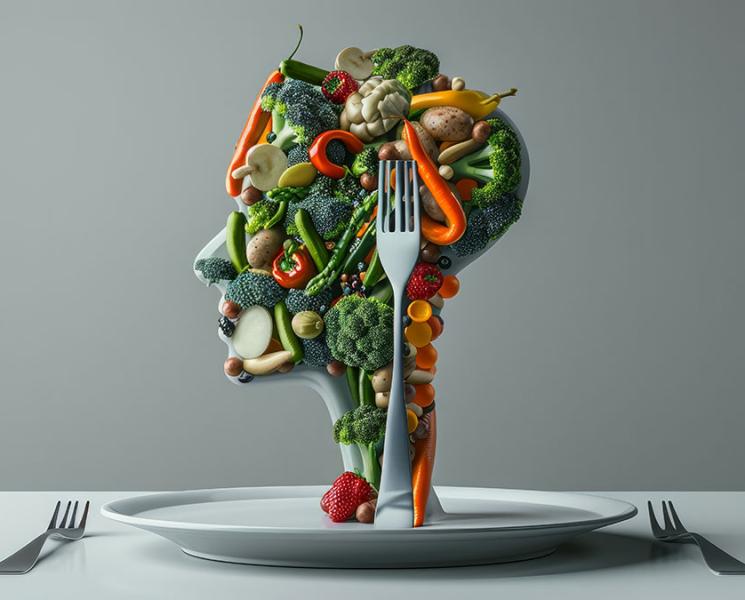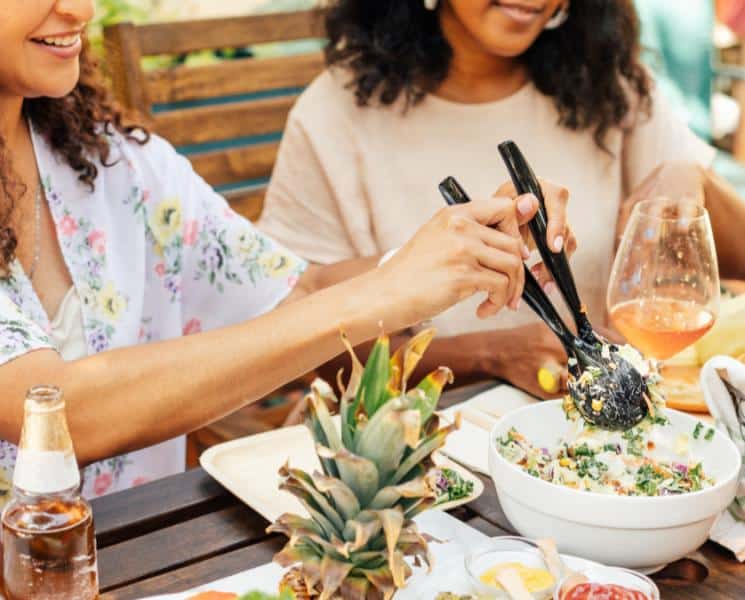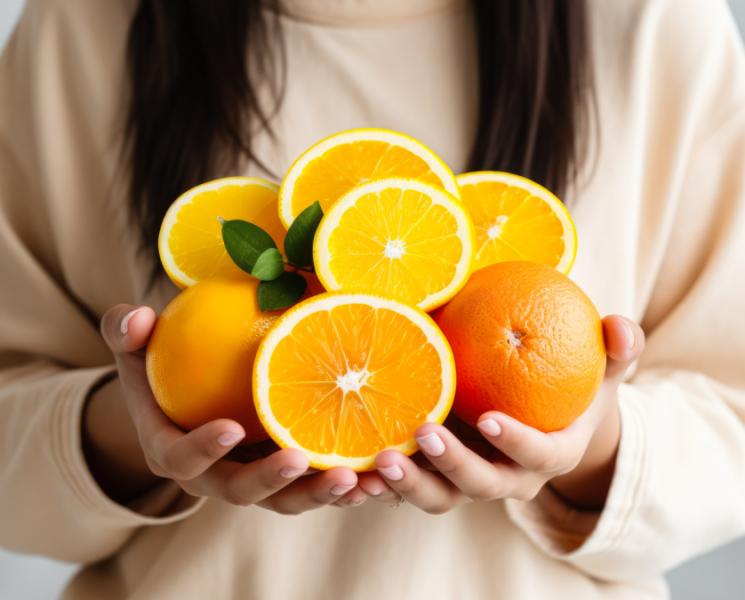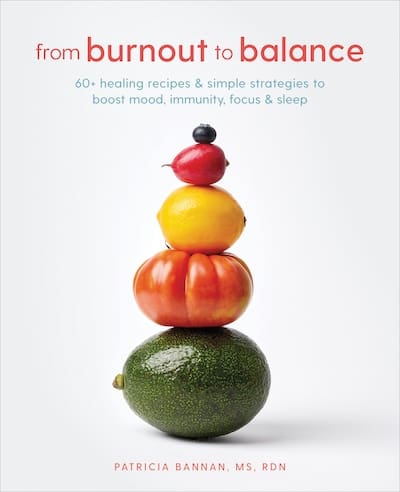Incorporating food for glowing skin in your diet can significantly enhance your skin’s radiance while supporting overall health.
Incorporating foods for glowing skin into your diet can significantly enhance your skin’s radiance while supporting overall health. As a registered dietitian passionate about delicious food and vibrant health, I’ve observed how a well-chosen diet can be as crucial as skincare products for achieving a glowing complexion.
The right foods can transform your skin, influencing issues like acne, dryness, and elasticity. I’m excited to share my top picks for foods that not only improve your skin’s appearance but also contribute to your well-being, complete with their benefits and delicious ways to enjoy them.
Why to Include Food for Glowing Skin in Your Diet
If you are looking for a more natural way of achieving a healthy glow, adjusting your diet should be one of the first places you start. What you eat can affect your skin a lot more than you think. Diet can play a role in a number of skin issues, such as:
- Acne
- Dryness
- Elasticity
- Blemishes
While diet alone can’t explain or resolve skin issues, it does play a part in how our skin looks and feels overall. Including more foods that support healthy skin can help you jumpstart your journey to achieving that glow.
Choose These Foods for Glowing Skin
While a diet primarily focusing on whole foods has shown to be beneficial in comparison to high glycemic foods and processed foods, these 6 choices are great to focus on with your weekly choices.
- Fatty fish
- Soy foods
- Avocado
- Broccoli
- Bell peppers
- Sunflower seeds
 1. Fatty Fish
1. Fatty Fish
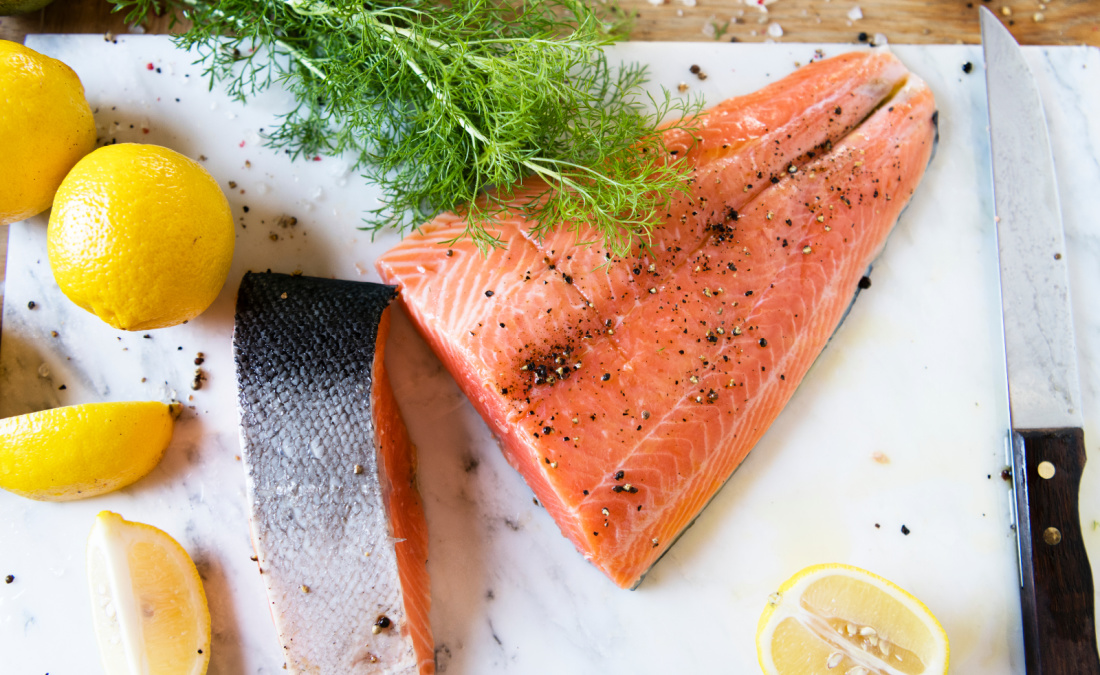
- Salmon
- Herring
- Mackerel
- Sardines
- Anchovies
Ways to add more fatty fish to your meals
Here are some quick & easy ways to include more fatty fish in your diet:
- Add chunks of smoked salmon or cooked salmon to your scrambled eggs or omelet.
- Use anchovies in a homemade Caesar dressing.
- Smash sardines over avocado toast with a drizzle of hot sauce.
This Grape & Salmon Power Bowl Salad is full of foods for glowing skin!
2. Soy Foods
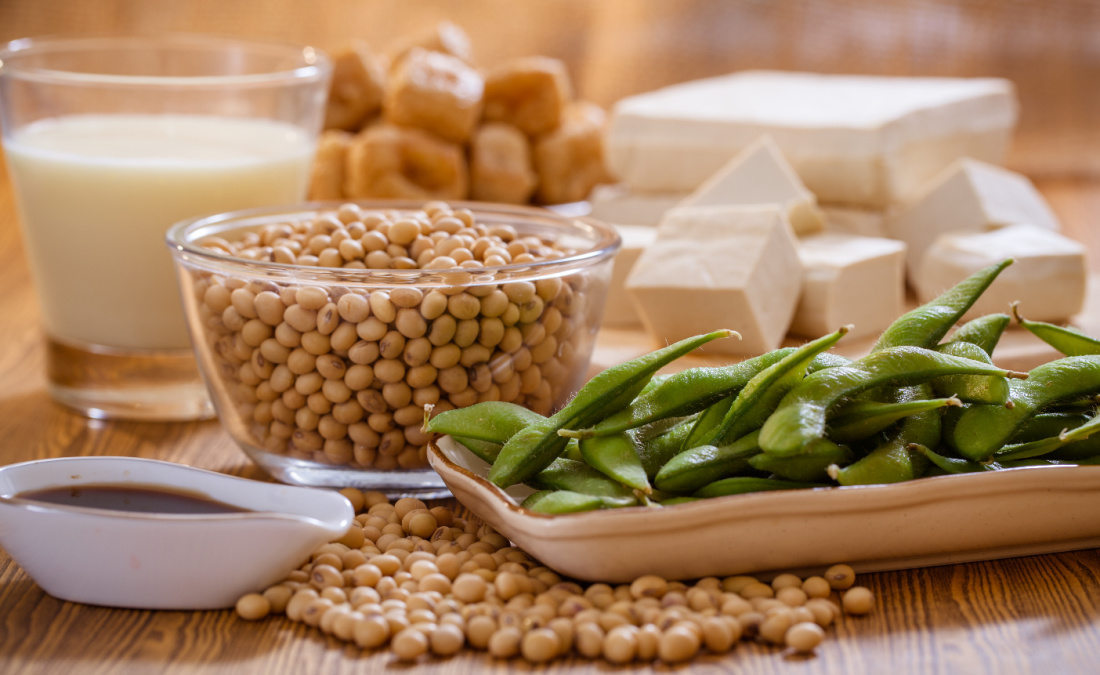
These findings suggest that soy products like soy milk and soy oil contribute to overall health and specifically benefit skin health.
Ways to add soy to your day
- Enjoy a glass of soymilk daily.
- Include edamame in salads or as a snack.
- Use miso, a fermented soybean paste, in soups, marinades, and dressings.
- Add tofu or tempeh to stir-fries, salads, sandwiches, or as a meat substitute in various dishes.
3. Avocado

Avocados are also a source of vitamins E and C, which help to support collagen production and fight against oxidative damage.
Ways to add more avocado to your meals
Avocados can be enjoyed in several ways. Some include:
- Use in place of mayonnaise on sandwiches or in salads.
- Smash onto toast for a quick breakfast.
- Use in place of butter in baked goods.
- Mash with fresh cilantro and lime juice for a veggie dip.
Try this refreshing and nutrient-packed Avocado and Pineapple Green Smoothie.
4. Broccoli

Ways to add broccoli to your meals
If you are looking for new ways to enjoy broccoli, try:
- Roast it in the oven with olive oil and garlic.
- Lightly steam, and toss with fresh lemon juice and parsley.
- Sprinkle with freshly grated parmesan cheese and cracked pepper.
- Puree into a creamy soup.
Find out what other 5 foods are hidden sources of vitamin C.
5. Bell Peppers
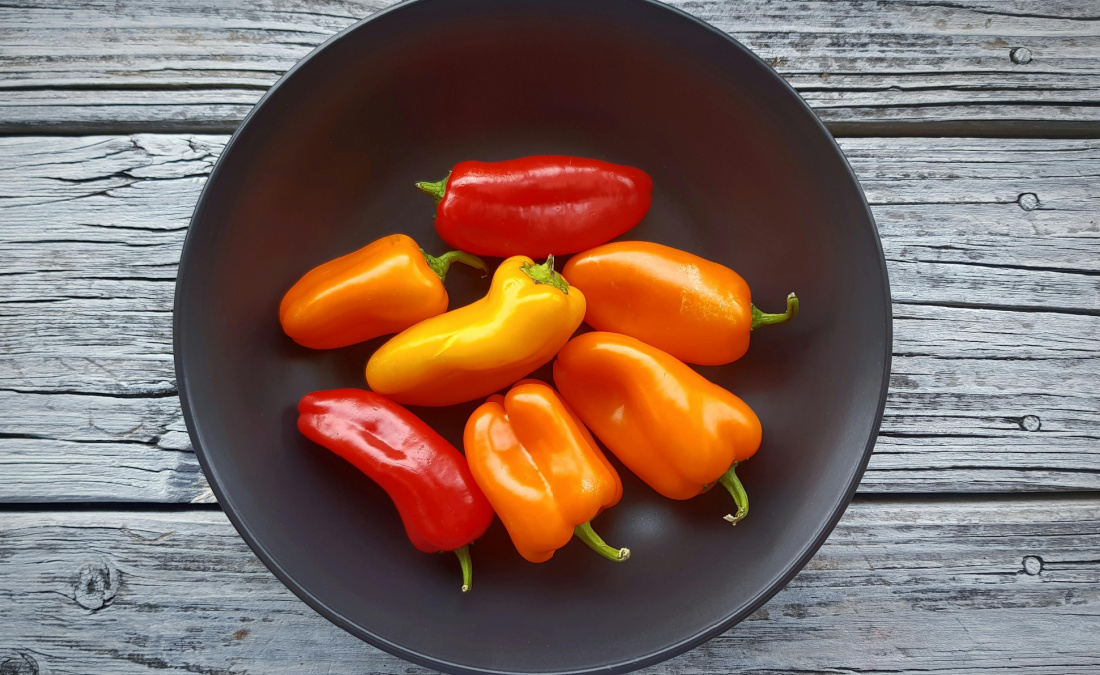
Both of these nutrients are antioxidants, which support healthy, glowing skin, as well as help to protect against certain types of cancers and chronic diseases.
Research has linked eating plenty of vitamin C with a reduced risk of developing wrinkles and dry skin as we age.
Ways to add more bell peppers to your meals
You can enjoy any color pepper you like in different ways, such as:
- Dipping raw strips into hummus or guacamole for a healthy snack.
- Sauteed with onions for a colorful side dish.
- Filling with quinoa, beans, and feta cheese for a filling main dish.
Add bell peppers to your grill with these Honey Lime Grilled Chicken and Vegetable Kebabs.
6. Sunflower Seeds

All of these nutrients are beneficial for the skin, which can help support the production of new skin cells, fight off oxidative damage, and reduce inflammation.
Ways to add sunflower seeds to your meals
You can use sunflower seeds in various ways and dishes like:
- Adding crunch to a green salad.
- A topping for yogurt or oatmeal.
- Mixed with dried fruits and nuts for a convenient trail mix.
- Blending into a smooth and creamy sunflower seed butter.
Use sunflower seeds to make this Seedy Low Carb Bread!
Conclusion
Incorporating these foods into your diet can help you achieve healthier, more resilient skin. Remember, while diet plays a critical role in skin health, it works best with a comprehensive skincare routine. Choose your favorite skin-nourishing foods and enjoy the dual benefits of delicious meals and radiant skin.
Which food for healthy skin that glows is your favorite?
References
- Meixiong J, Ricco C, Vasavda C, Ho BK. Diet and acne: A systematic review. JAAD Int. 2022;7:95-112. Published 2022 Mar 29. doi:10.1016/j.jdin.2022.02.012
- Thomsen BJ, Chow EY, Sapijaszko MJ. The Potential Uses of Omega-3 Fatty Acids in Dermatology: A Review. J Cutan Med Surg. 2020;24(5):481-494. doi:10.1177/1203475420929925
- Rizzo J, Min M, Adnan S, Afzal N, Maloh J, Chambers CJ, Fam V, Sivamani RK. Soy Protein Containing Isoflavones Improves Facial Signs of Photoaging and Skin Hydration in Postmenopausal Women: Results of a Prospective Randomized Double-Blind Controlled Trial. Nutrients. 2023; 15(19):4113. https://doi.org/10.3390/nu15194113
- Nagata C, Nakamura K, Wada K, et al. Association of dietary fat, vegetables and antioxidant micronutrients with skin ageing in Japanese women. Br J Nutr. 2010;103(10):1493-1498. doi:10.1017/S0007114509993461
- Yang L, Palliyaguru DL, Kensler TW. Frugal chemoprevention: targeting Nrf2 with foods rich in sulforaphane. Semin Oncol. 2016;43(1):146-153. doi:10.1053/j.seminoncol.2015.09.013
- Sikdar S, Papadopoulou M, Dubois J. What do we know about sulforaphane protection against photoaging?. J Cosmet Dermatol. 2016;15(1):72-77. doi:10.1111/jocd.12176
- Kleszczyński K, Ernst IM, Wagner AE, et al. Sulforaphane and phenylethyl isothiocyanate protect human skin against UVR-induced oxidative stress and apoptosis: role of Nrf2-dependent gene expression and antioxidant enzymes. Pharmacol Res. 2013;78:28-40. doi:10.1016/j.phrs.2013.09.009
- Cosgrove MC, Franco OH, Granger SP, Murray PG, Mayes AE. Dietary nutrient intakes and skin-aging appearance among middle-aged American women [published correction appears in Am J Clin Nutr. 2008 Aug;88(2):480]. Am J Clin Nutr. 2007;86(4):1225-1231. doi:10.1093/ajcn/86.4.1225
- FoodData Central. Accessed May 5, 2024. https://fdc.nal.usda.gov/fdc-app.html#/food-details/170563/nutrients

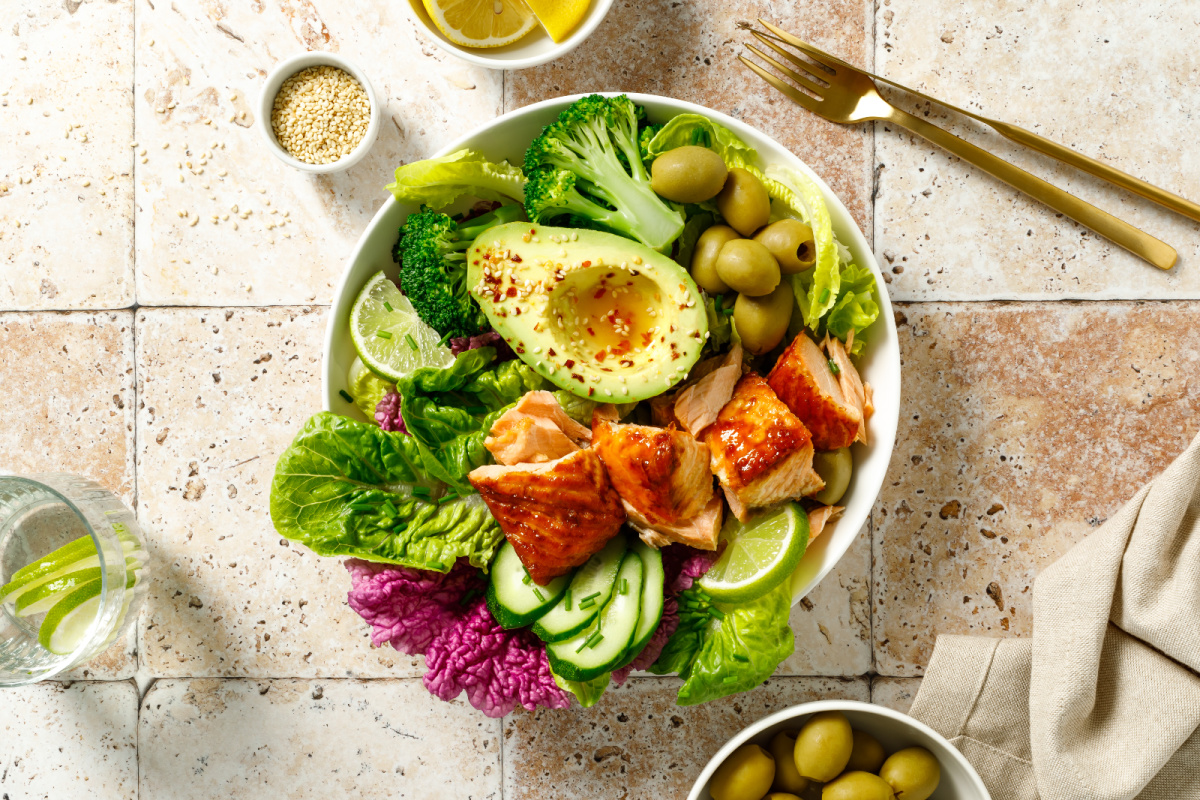
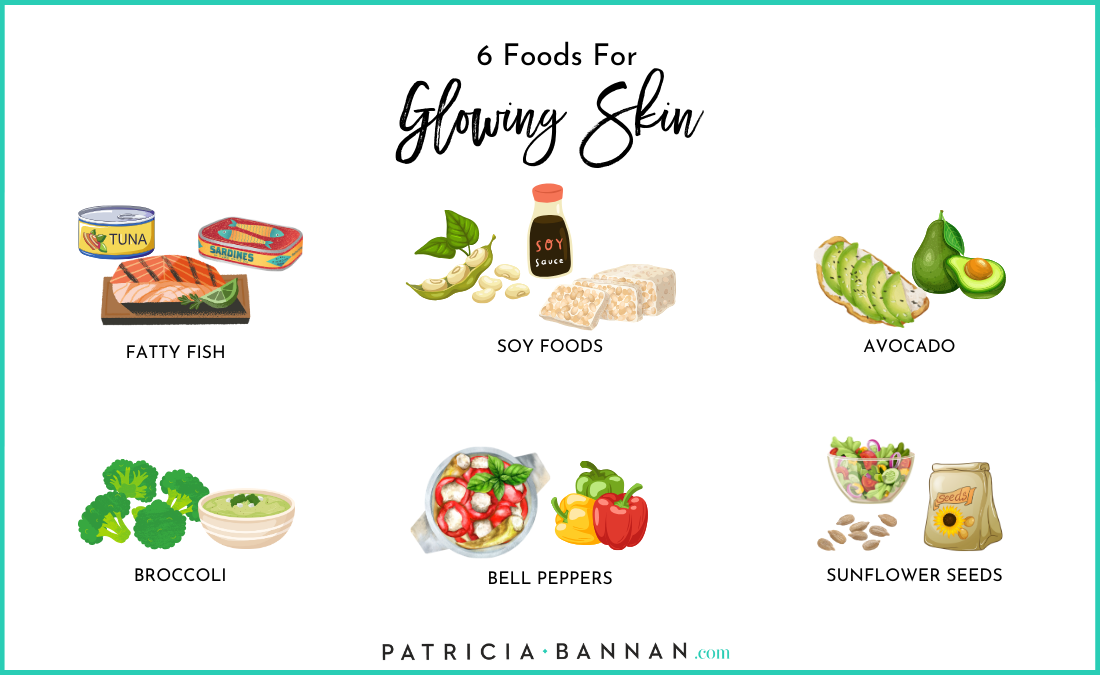 1. Fatty Fish
1. Fatty Fish 